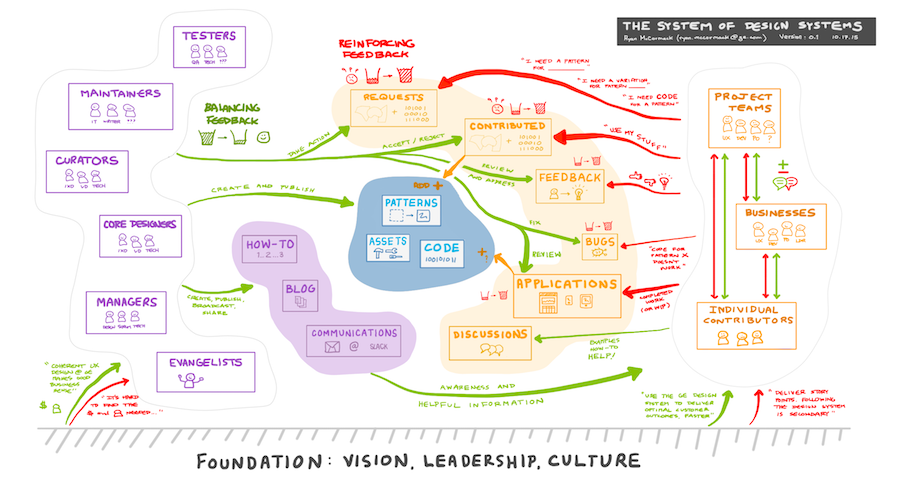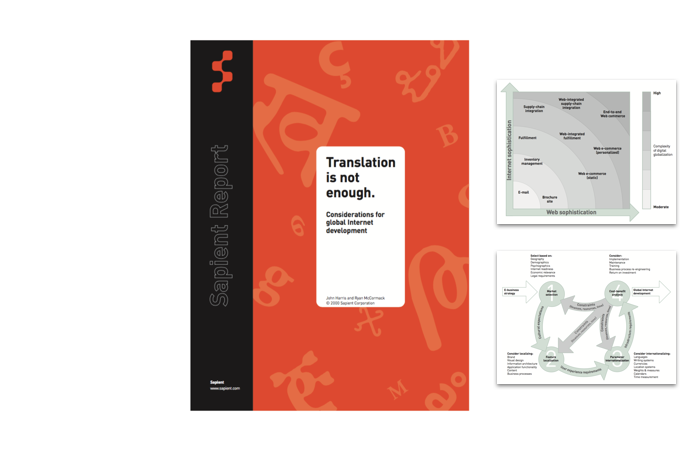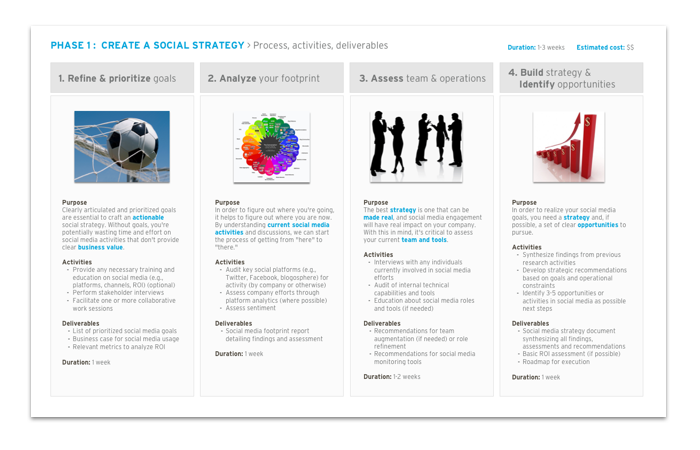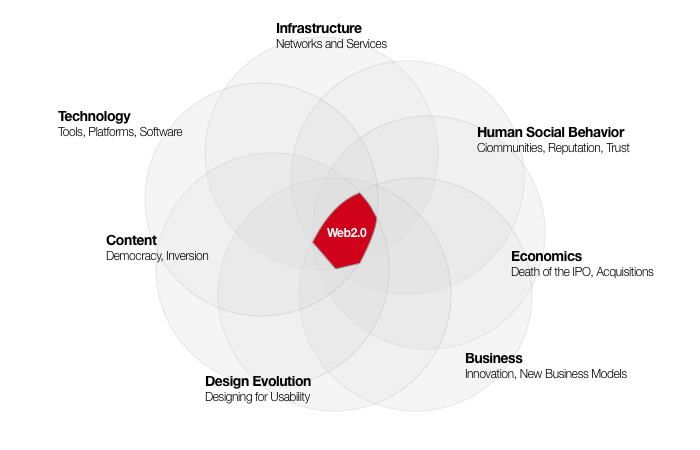Business strategy is a murky endeavor; the only constant is relentless change. Uncertainty is especially prevalent in the world of digital business, products and services. Products succeed and flop. Companies thrive and struggle. Customer expectations are constantly shifting. Strategic planning can’t eliminate risk; all it can do is increase the odds of success. Thought leadership is about facing this uncertainty, shining a flashlight on possible paths forward, and then enabling decision making.
In my 17+ years of Internet consulting, Web site development, and application design, I’ve strived to provide thought leadership whenever possible, leveraging my understanding of design (what’s useful and desirable), technology (what’s feasible), and business (what’s realistic). My flashlight shines on questions like:
- What is the system of social, cultural, economic and technological forces that surround businesses and their customers?
- What trends should be considered when making strategic decisions about products and services?
- How can businesses optimize internal processes, approaches, and methodologies to deliver in a climate of uncertainty?
- What assumptions in my current business environment need to be challenged?
- What things should we be considering to improve the odds of success for our product(s), applications or organization?
Sample engagements
 |
Twitter experienced explosive growth not only in the number of users it supported, but in the business operations, infrastructure and online tools needed to support a wide variety of users (i.e., individuals, celebrities, businesses, potential advertisers). This growth led to an unmanageable sprawl of different sites, content and experiences for users, and at some point, key internal stakeholders decided it was time to bring order to the chaos. I led a small agency team tasked with helping Twitter to develop a strategy for internal site consolidation, along with a set of guiding principles and recommendations about how to move forward. |
 |
Between 2007 and 2010, I worked with Chevron on numerous strategic initiatives, including a complete web site redesign, microsite and country site strategies, corporate social responsibility efforts, and possible approaches to social media. As one of the largest energy companies in the world, Chevron faces significant challenges with its online efforts. It needs to deliver useful content and messages that are compelling to its primary audiences (energy influentials, NGOs, media), while still meeting complex legal requirements in an often volatile political climate. |
 |
As the fastest growing quick-service restaurant chain in the US, Chipotle faced significant challenges to evolve its online presence, both on the web and mobile devices. Between 2008 and 2010, I worked closely with senior Chipotle executives on core digital strategy and customer engagement programs. |
| It’s not often that one gets to work with a great consumer electronics brand from its inception, but I was fortunate enough to get involved with Sonos early in their life as a company (i.e., they had a product, a name, and nothing else). Since 2003, I have worked with Sonos through three iterations of its web site, informing all aspects of their digital strategy, including web site (re)designs, product launches, and informing aspects of their approach to social media marketing. | |
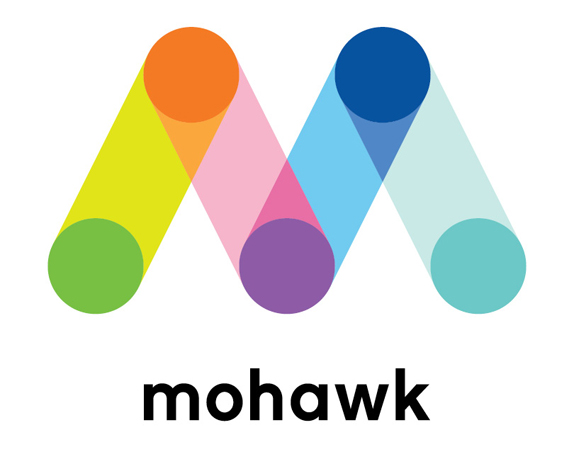 |
Mohawk Fine Papers is one of the leading producers of superior quality papers in the world, and also offers a broad array of digital products & services. Mohawk realized the paper industry was changing, and they had to evolve to meet new challenges. Part of this change would involve retooling Mohawk’s web strategy and redesigning key web sites. Working with the Mohawk team, I helped craft a solid digital strategy, which articulated key elements of the path forward: how sites would merge, the right way to handle their international site, and the best features for the new Mohawk online experience. With this actionable strategy in place, the design team was able to craft a beautiful new Web experience that met Mohawk’s strategic vision. |
| As one of the three largest International auction houses in the world, with history dating back to 1793, Bonhams was poised to push their web site forward. Significant technical constraints, along with the realities of complex business operations spanning two continents, meant that the web site redesign needed to be approached thoughtfully, with a strategy that could be realized. Multiple working sessions were held with internal stakeholders and technical partners to determine the best way forward. | |
| Phillippine telecommunications provider SMART (the wireless arm of PLDT, the largest fixed-line telco) was looking to expand their digital service offerings. With a history focused more on infrastructure and operations, digital services are always difficult for telecommunications companies, and SMART was no different. They faced significant challenges, both internally and externally, to achieve their goals of providing more compelling digital services. With an eye towards the competitive landscape, business operations, and overarching business goals, we worked with SMART to help move forward with their digital initiatives. | |
 |
Cisco’s user experience group was trying to unify aspects of user interface design across the company. Internal stakeholders were not completely bought in to this idea, and the UE team had no strategy to market and sell internally, nor to deliver and maintain design standards in the long term. MetaDesign helped Cisco develop both an internal marketing stategy and an approach to governance and management for their UI design standards. |
 |
Nissan’s global Web sites did not reflect their new brand identity. They also wanted to reduce global design and development cost significantly. Sapient was asked to create a design system and a Web-based “Global Style Guide” that would help designers and developers. Over the course of several months, we worked with three regional teams to develop a governance strategy, a rollout plan, the design system itself, and the style guide explaining it. It was a massive success for Nissan and has been used to roll out this design system across at least 15 global sites. |
 |
Hewlett-Packard wanted to create global Web site design standards. We worked with them to develop a Web-based design style guide (similar to what was described for Nissan above), along with the general approach used to version control, management and evolution. |
